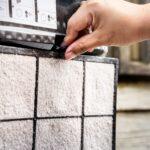We love the charm and craftsmanship of older homes. A lot of our customers in the South Hills of Pittsburgh live in them, so we’ve replaced literally thousands of furnaces in them over the years.
But older homes present some unique heating challenges that not every HVAC installer is interested in pointing out. A lot of installers will replace your old furnace in your old home without considering these challenges. And you end up disappointed in your new furnace as a result.
Here at Kowalski, we don’t want to disappoint any of our customers. So today we’re telling you what to know before replacing a furnace in your older home. This way, you can decide with confidence whether you should replace yours.
Here’s what we’ll cover:
The Advantages of a New Furnace for Your Older Home
The Challenges for a New Furnace in Your Older Home, including:
All right, let’s get to it!
The Advantages of a New Furnace for Your Older Home
There’s no question that if your furnace is 20 years old or more (and here in Pittsburgh, we’ve got some 30- and 40-year-old furnaces still chugging along), a new model will give you advantages that are quite impressive and truly noticeable, especially if you’ve never experienced them. These include:
- Variable speed airflow, which delivers even and consistent heat.
- Better fuel utilization, which lowers your energy bills and lessens your environmental impact (see our post on this topic for more info).
- Excellent air filtration, which delivers cleaner indoor air.
- Improved safety and shutoff features, which protect your family and home from toxic airborne chemicals.
- Smart thermostats add convenience and automation to your indoor environment.
- Quiet operation, which decreases noise pollution in your home.
Basically, today’s furnaces deliver heating at the level and location where you need it with the least amount of energy possible. This means more warmth for less money. And that’s always going to be a win, whatever the age of your home.
Even if your older home has already had a furnace replacement at some point, it might be time for another one. Depending on the brand, model, and maintenance history, a furnace can start to fail at around 10 years old. And if your warranty has expired, the cycle of repairs may not be worth the cost.
Now, despite all the advantages of newer furnaces, we do have two caveats:
- If your decades-old furnace is still running reliably and never requires service beyond regular filter changes and annual maintenance, there’s no need to replace it yet.
- If you do need a new furnace for your older home, it is probably not going to be your magic heat bullet. Meaning it may not be able to provide you with the warmth you’re looking for unless you make some other changes too. So next, let’s consider what those might be.
The Challenges for a New Furnace in Your Older Home
Unfortunately, when you’re looking to warm up in your drafty older home, a new furnace could leave you a little disappointed. This is because older homes often have characteristics that drag down the performance of new furnaces, no matter how high quality or efficient they are.
Following are some of these old-home challenges for new furnaces.
Window Leaks
Heat loss through windows is responsible for about 25%-30% of your energy usage. In other words, when you pay your heating bill, you may be throwing a huge chunk of money out the window, almost literally.
In any home where the windows aren’t energy efficient, heat loss is a problem. But in older homes, the problem is more acute. This is because older homes usually have one of the following types of windows:
- Replacement windows provide mixed results on longevity. They often last less than 10 years.
- The original windows tend to be in a state of disrepair and have only single-paned glass.
Either way, before you invest in a new furnace for your older home, you should evaluate and possibly address the state of your windows. Here’s some guidance:
If You Have Replacement Windows Already:
You don’t necessarily have to go to the extreme of replacing them again. There are various ways to seal or reinforce your windows, so they keep more heat in. Here’s a DIY video we like on the topic.
If You Have Your Home’s Original Windows:
Please consider restoring them rather than replacing them. We’re not window experts, but we do know our way around older homes. Plus, we’re contractors who care very much about design.
And we want you to know that original windows are a feature, not a bug, of your older home.
Original windows have high-quality materials, a beautiful design, and longevity, all of which replacement windows cannot match. With a restoration that includes new glass, your original windows will keep heat in as well as any replacement window can and serve you for a lot longer.
Air Leaks
Another challenge for new furnaces in older homes is air leaks in a lot of areas – not just through windows.
Over time and across years of weather, houses settle, shift, expand, and contract. This opens up tiny (and sometimes not so tiny) gaps, cracks, and holes in a myriad of places. Then in the winter, warm air escapes, and cold air invades through these openings. In the summer, the reverse is true: cool air escapes, and warm air invades.
And when owners of older homes can’t seem to warm up in the winter, they tend to blame old HVAC equipment first. This seems logical and may indeed be the problem. But before you can expect a new furnace to deliver seamless warmth in your old home, you need to identify any air leaks and seal them.
Potential Sources of Air Leaks
Here are just some of the places where air leaks in older homes:
- Windows (as we described in the previous section)
- Door frames
- Outlets and switch plates
- Light fixtures
- Vents and fans
- Baseboards
- Fireplaces
- Chimneys
- Anywhere cable or piping enters the home
- On the exterior, anywhere that two different materials meet, such as around the foundation, roof, and all the corners.
Finding Specific Air Leaks
So, how can you find the exact location of the air leaks in your home? Where do you even start?
The most reliable and comprehensive way is with a professional energy audit of your home. In an energy audit, a certified assessor inspects your home room by room. He or she will perform thermographic scans to look for heat gain and loss points and a blower door test that depressurizes your indoor air so that the higher pressure outdoor air flows in through the leaks – thus revealing their location.
You can also perform your own energy audit without any special training or equipment. Your findings won’t be as thorough or exact as a professional’s, but you can certainly pinpoint many sources of your home’s air leaks and seal them. Here is a checklist for conducting a DIY energy audit.
Energy audits also diagnose where your home is lacking insulation, which is the next item on our list of challenges that new furnaces have in older homes.
Poor Insulation
Yet another challenge for new furnaces in older homes is a lack of insulation. Actually, this is a problem for most homes – not just older ones. It turns out that more than 90% of all U.S. homes are underinsulated, according to the U.S. Energy Information Administration.
But older homes are especially vulnerable in this area because U.S. building codes did not make residential insulation mandatory until 1965.
Poor insulation has a huge impact on heat loss in your home and your comfort in it:
- An uninsulated attic can cause a 25% heat loss.
- Uninsulated walls can cause a whopping 35%-45% heat loss.
So how can you tell if your home is poorly insulated? A professional energy audit, which we described above, is the most thorough way to know exactly where your home needs more insulation. But these signs are also good indicators:
- Your interior walls, floors, and ceilings are cold or damp to the touch.
- Your exterior walls feel warm to the touch.
- Rooms near a garage or attic are excessively cold in winter or warm in summer.
- Ice dams form on your roof in the winter. (Ice dams form when heat escapes from your roof and melts the underside of snow there. Then the water trickles down and freezes.)
Ultimately, if you live in an older home and you’ve never addressed the insulation, there’s a very good chance that you’ll need to do so before a new furnace can do its job well.
Poor Ductwork
Often, old ductwork is not suitable for a new furnace. In fact, old ductwork is often not suitable, period.
Your ducts are the indoor distribution system for the heated air created by your furnace. If the ducts aren’t distributing air well, it doesn’t matter how new or efficient your furnace is – it won’t be able to heat your home adequately.
So what causes ductwork to underperform?
In any home, ductwork takes on wear and tear over time, much like your furnace does. It develops cracks, gaps, and leaks, so it can’t deliver all the air that your furnace is conditioning. In fact, some studies show that 40% of your heat is lost through leaky ductwork. So your ducts need repairs from time to time and eventually a replacement – just like your furnace does.
Now, in older homes, ductwork is often not only worn but also poorly sized, with poor transitions from one level or direction to another. This is because of piecemeal HVAC upgrades over time and home renovations where the HVAC was retrofitted to the design rather than considered upfront.
You don’t want to invest in a new furnace for your older home and not be able to receive all the air it warms for you.
A quality HVAC installer will be able to evaluate your current duct system, determine its condition and capacity, and, if necessary, design a new system that’s tailored to your home and worthy of your new furnace.
In fact, any HVAC installer who agrees to replace the furnace in your older home should also consider the ductwork when conducting your estimate. If they don’t, you probably want to collect additional estimates and compare approaches.
A new furnace in an older home is rarely a simple in-and-out replacement project. A good installer knows that and is willing to have that conversation with you.
_____________
If you’re a Pittsburgher with an older home, we’re here to help you get the most out of it this winter with a heating system designed just for you and your unique space. And custom ductwork is one of our specialties. Give us a call at 412-952-5923. You can also contact us via our website at any time. We look forward to serving you!





